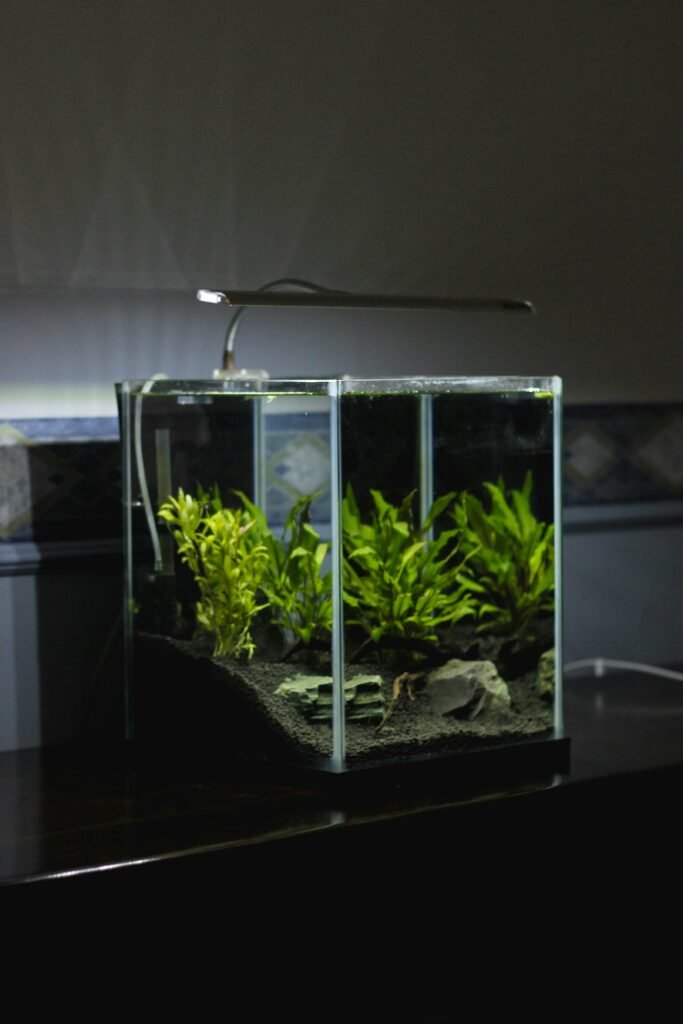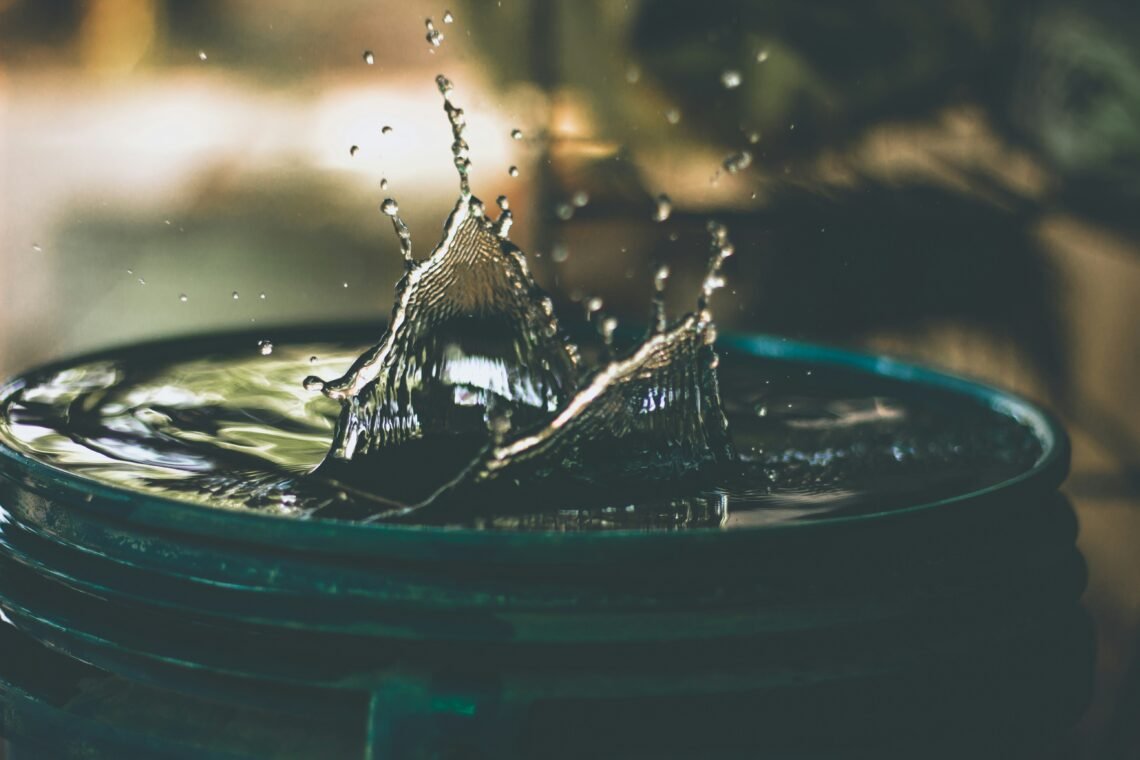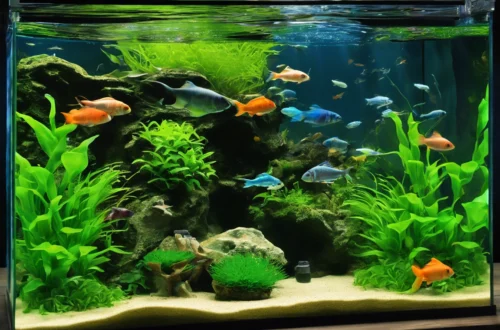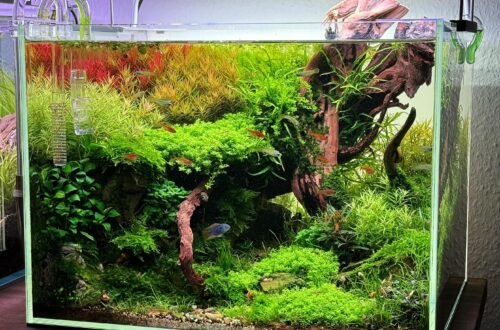Maintaining optimal water quality in your aquarium is crucial to keeping your fish healthy and your tank thriving. Whether you have one aquarium or, like me, manage several, balancing the ecosystem within each tank can feel overwhelming. However, with a good understanding of water quality basics, a consistent maintenance routine, and the strategic use of natural plants and occasional chemicals, it’s entirely manageable. Here’s how I keep my aquariums in top shape.
Understanding the Basics of Aquarium Water Quality
Before diving into specific tips, it’s important to grasp the basics of aquarium water quality. The nitrogen cycle is at the heart of it all, where beneficial bacteria convert harmful ammonia (from fish waste and uneaten food) into nitrite and then into less harmful nitrate. Monitoring key parameters like pH, ammonia, nitrite, nitrate, and temperature regularly helps maintain a stable environment for your fish and plants.
Consistency in these water parameters is essential. Sudden fluctuations, even small ones, can stress your fish, making them more susceptible to disease. Regular monitoring and adjustments are key to preventing issues before they become serious problems.
The Importance of Regular Water Testing
Water testing is non-negotiable when it comes to maintaining water quality. I use a reliable testing kit that measures pH, ammonia, nitrite, nitrate, and sometimes other parameters depending on the needs of specific tanks. Testing once a week works well for me, as it helps catch any changes early.
When testing, I always keep a log of the results. This way, I can track trends and spot deviations that might indicate an issue, like a sudden rise in ammonia or nitrite levels. If something’s off, it’s easier to figure out what might be causing it and fix the problem before it affects my fish.
Managing the Nitrogen Cycle in Multiple Aquariums
With multiple aquariums, each at different stages of the nitrogen cycle, managing this process can be tricky. For new tanks, I make sure to properly cycle the tank before adding any fish. This involves setting up the tank with a source of ammonia and allowing beneficial bacteria to establish themselves over several weeks.
For my established tanks, I regularly monitor the nitrogen cycle, making sure everything is stable. Sometimes, issues arise, like unexpected ammonia spikes, which can indicate a problem with the filtration system or overfeeding. Being prepared to troubleshoot these issues is crucial.
The Role of Filtration Systems
Filtration systems are the workhorses of maintaining water quality. There are three main types of filtration: mechanical, chemical, and biological. Mechanical filters remove physical debris, chemical filters remove toxins, and biological filters house the beneficial bacteria that keep the nitrogen cycle running.
I choose filters based on the size and type of each tank. For example, a heavily planted tank might need less chemical filtration but more biological filtration. Regular maintenance, like cleaning or replacing filter media, keeps everything running smoothly.
The Benefits of Using Natural Plants in Aquariums
I’m a big fan of using natural plants in my aquariums. They’re not just for decoration—they play a vital role in maintaining water quality. Plants absorb carbon dioxide and release oxygen, which helps stabilize pH levels. They also take up nitrates, which are a byproduct of the nitrogen cycle.
Some of my go-to plants are Java moss, Anubias, and Amazon swords. These plants are hardy and effective at absorbing excess nutrients, which helps prevent algae from taking over. Plus, they provide a natural habitat for my fish, making the tank more like their natural environment.
The Strategic Use of Chemicals in Aquariums
Even though I prefer natural methods, sometimes chemicals are necessary to maintain water quality. For instance, if I notice a sudden spike in ammonia or if there’s an outbreak of disease, chemicals can provide a quick and effective solution.
However, I’m careful about how I use them. It’s important to follow the dosage instructions exactly, as overuse can harm both the fish and plants, and throw off the balance of the tank. I always opt for chemicals that are safe for plants and won’t disrupt the natural ecosystem I’ve created.

The Impact of Feeding Habits on Water Quality
Feeding my fish the right way is another critical aspect of maintaining water quality. Overfeeding can lead to excess waste, which in turn raises ammonia levels. I choose high-quality food that’s appropriate for the species I keep, and I feed them small amounts once or twice a day.
It’s important to remove any uneaten food after a few minutes to prevent it from decomposing and polluting the water. Regularly checking the behavior and appearance of my fish helps me ensure they’re not being over or underfed.
The Importance of Regular Water Changes
Regular water changes are one of the most effective ways to keep water quality high. For most of my tanks, I do a 10-20% water change every week. This helps remove excess nutrients, toxins, and waste products that can build up over time.
When I change the water, I make sure the new water matches the temperature and pH of the tank to avoid shocking the fish. I also use a gravel vacuum to remove debris from the substrate, which keeps the tank clean and healthy.
Dealing with Algae in Aquariums
Algae can be a persistent problem in aquariums, but with the right approach, it’s manageable. Different types of algae have different causes—green algae thrive on excess light and nutrients, while black beard algae can indicate poor water circulation.
I prefer natural methods for controlling algae, like adding algae-eating fish or plants that compete with algae for nutrients. If I need to use chemicals, I choose ones that target algae specifically and won’t harm my plants or fish. Keeping the tank clean and controlling light exposure also helps prevent algae from taking over.
Managing Water Quality in Different Types of Aquariums
Each of my aquariums has unique water quality needs. For example, my freshwater tanks are generally easier to maintain than my saltwater tanks, which require precise salinity levels and more complex filtration systems. Certain species, like discus or dwarf shrimp, also have specific water quality requirements.
Specialized tanks, like breeding or quarantine tanks, need even more attention. For instance, quarantine tanks must have optimal water quality to prevent stress and disease in new or sick fish. I tailor my approach to the needs of each tank, but the basics of water quality apply to all.
Troubleshooting Common Water Quality Issues
Even with the best care, water quality issues can arise. Cloudy water might be caused by a bacterial bloom, excess food, or disturbed substrate. Unpleasant odors usually indicate decaying organic matter, like uneaten food or dead plant material.
Fish behavior can also signal water quality problems. If my fish are gasping at the surface, it might indicate low oxygen levels, which could be due to poor water circulation or high temperatures. Regular observation and quick response to these signs are crucial to prevent bigger problems.
Long-Term Water Quality Maintenance Strategies
Maintaining water quality across multiple aquariums requires a long-term strategy. I create a maintenance schedule to stay on top of water changes, filter cleanings, and plant care. Using technology, like automatic water testers and feeders, also helps me manage my tanks more efficiently.
Keeping a logbook of water quality tests, maintenance tasks, and observations allows me to track the health of my aquariums over time. This is especially useful for identifying patterns or recurring issues that may need a more targeted approach.
Environmental Considerations and Ethical Practices
As an aquarist, I try to consider the environmental impact of my hobby. This includes sourcing my fish and plants responsibly, minimizing the use of harmful chemicals, and practicing sustainable aquarium management.
I also promote eco-friendly practices, like recycling old aquarium equipment and using energy-efficient lighting. By adopting these practices, I’m not only helping my aquariums thrive but also contributing to the health of the broader environment.
Maintaining optimal water quality in my aquariums is an ongoing process that requires dedication and attention to detail. By understanding the basics, regularly testing the water, and combining natural methods with strategic chemical use, I can ensure a healthy environment for my aquatic life. Consistency is key, and small daily actions make a big difference in the long run.
FAQs
- How Often Should I Test My Aquarium Water?
- Testing your aquarium water once a week is recommended to monitor key parameters and catch any issues early.
- What Are the Signs of Poor Water Quality?
- Cloudy water, unusual odors, and changes in fish behavior, such as gasping for air, are common signs of poor water quality.
- Can I Use Tap Water in My Aquarium?
- Tap water can be used, but it should be treated with a water conditioner to remove chlorine, chloramine, and heavy metals.
- How Do I Know If My Plants Are Helping with Water Quality?
- Healthy plant growth, stable pH, and lower nitrate levels are good indicators that your plants are benefiting the water quality.
- What Should I Do If My Fish Are Acting Strangely?
- If your fish are acting unusually, test your water immediately and check for any changes in parameters. Adjustments or water changes may be necessary.






